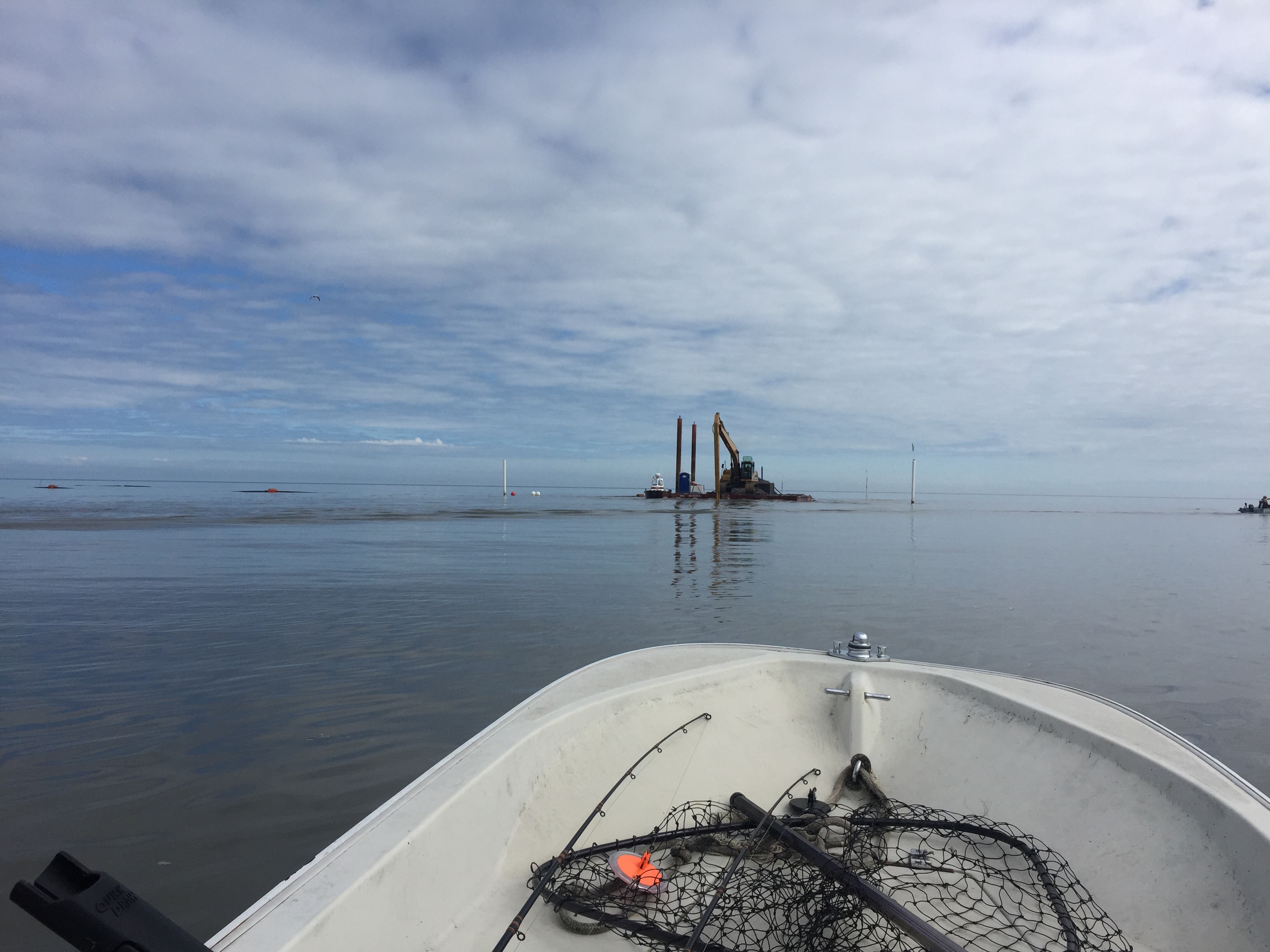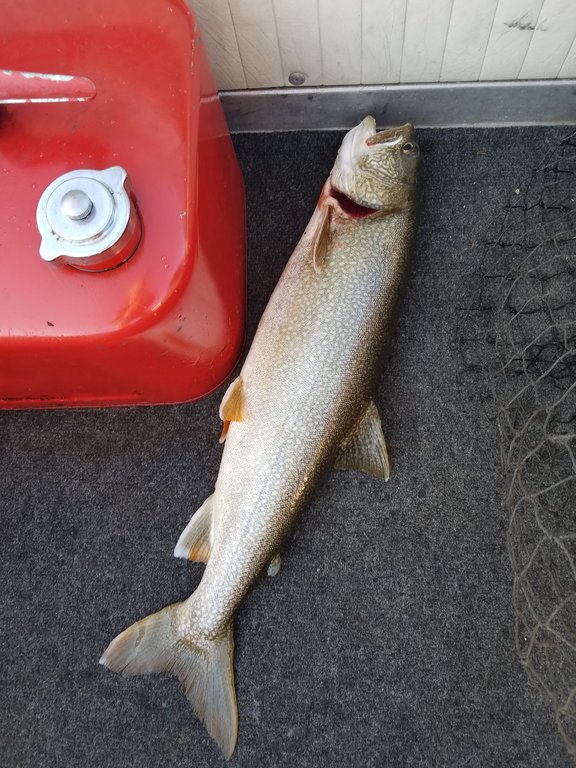

Lucky13
Members-
Posts
1,234 -
Joined
-
Last visited
Everything posted by Lucky13
-
-
Yes, the receipt is crucial if you get checked. I was concerned because there have been LO guys talking about bringing bait from elsewhere, and DEC is VERY concerned about the possibilities of introducing yet another disease into the system. All it will take is one bug that had not been an issue with salmon in the past, but is in this system, and the whole thing could disappear. The next whirling disease or BKN or VHS could be the last one!
-
http://lre-wm.usace.army.mil/ForecastData/DailyLevelsEnglish.pdf
-
I checked with Region 8, and there is one licensed distributor of certified sawbellies in the Finger Lakes.
-
Hardly worth the effort to go out at night with the one rainbow limit now.
-
No, but they did fish with them from time to time. This was ~ 40 years ago, too, Andy has long since moved to CT.
-
For certification, they have to be tested. I knew the dealers netted them, and my friends that used to night fish Canandaigua told me how fragile they were, so I just assumed a dealer would only sell on the lake where they were netted, to avoid the certification cost and hassle and the additional holding time and risk of loss. But if they are a buck apiece now, it's likely worth the risk. We are paying close to a buck apiece for shiners up in the 'daks anymore! Thanks for the explanation.
-
You can buy certified Alewives that are legal to transport between the lakes? I did not know they could be raised in Bait Ponds.
-

St Lawrence Sturgeon
Lucky13 replied to Fishingframes's topic in St. Lawrence River Fishing Reports - 1000 Islands Fishing
DE will not hassle an angler who catches a sturgeon incidental to attempting to catch some other species of fish and immediately releases it without unnecessary injury, which could be caused by removing it from the water for a photograph. While they are big and look armor plated, they are nevertheless fragile. They are also very easy to catch, they are big dumb bottom feeders that vacuum up everything in their path. But the numbers are very limited, even in the St Lawrence ,and classed as threatened, and NYS Rules say no to targeting threatened species. Certainly, holding one up at 90° to its normal orientation with a big handle thing stuck through the gills cant do the fish any good, even if it is released after it gets heavily stressed out from fighting. Catch and Release is not frowned upon by this generation, except when it is poorly done and the fish are already very rare (and NYSDEC has pretty good research on numbers as they monitor spawning locations and known return sites, and what egg harvest is done is done in the St. Lawrence and the Niagara.), and the sturgeon are still very rare. -
The restoration Program in Cayuga has been going on for a lot longer. Life History Lake sturgeon spawn in the spring from May-June. Prior to spawning, adult sturgeon form groups in deep holes near the spawning site. At this time, the sturgeon may perform "staging" displays that include rolling near the bottom then leaping out of the water to fall with a loud splash. Actual spawning takes place in areas of clean, large rubble such as along windswept rocky shores of islands and in rapids in streams. The eggs are scattered by currents and stick to rocks and logs. Young hatch out in 5-8 days and grow rapidly, reaching 7.5 inches by the end of the first growing season. A mature female lake sturgeon may lay from 100,000-800,000 eggs during a single spawning season. The lake sturgeon is one of the longest-lived and slowest to mature freshwater fish species. Female lake sturgeon do not reach sexual maturity until 14-23 years old and may live up to 80 years. Male lake sturgeon reach sexual maturity at 8-19 years old and can live to 55 years of age. In 1953, a 154 year old lake sturgeon was caught in Lake of the Woods, Canada. It weighted 208.5 pounds.
-

LL Salmon stocking in 2019- bad news...
Lucky13 replied to bulletbob's topic in Finger Lakes Discussion
They were very good for both Rainbows and Landlocks until someone (not DEC, according to them they only stocked tiger muskies to control the Golden Shiners in Second Lake) introduced the northerns. They still produce fish, and remain good Laker lakes, but not like before the esocids -

LL Salmon stocking in 2019- bad news...
Lucky13 replied to bulletbob's topic in Finger Lakes Discussion
The Northerns up in the Fulton Chain will be a little skinnier! -
Also 17' or under except for canoes.
-
It might be appropriate to remind people that the success of this program is dependent on survival and return of these fish, which have been stocked in limited numbers ( <1000 in 2017, 4th or 5th time in the ~15 years), which is hindered by catching them on hook and line. Also, because they are a threatened species with no open season, targeting them is not legal, even if "catch and release." I know that Dr. Dittman of USGS BRD at Tunison Lab would be very appreciative of these fish being left alone as much as possible. Looking at the size of the big one, the males are waiting and only have a couple of years to go before the females should come back, and maybe they can spawn successfully.
-

BRADDOCKS BAY WARNING UPDATE
Lucky13 replied to budweiser's topic in New York Fishing Reports - Lake Ontario (South Shore)
-

BRADDOCKS BAY WARNING UPDATE
Lucky13 replied to budweiser's topic in New York Fishing Reports - Lake Ontario (South Shore)
-

BRADDOCKS BAY WARNING UPDATE
Lucky13 replied to budweiser's topic in New York Fishing Reports - Lake Ontario (South Shore)
The only dredging associated with this project is obtaining sand from the channel area to the west of the stone Headlands barriers, which will open up the navigation channel and will be used to cover the stone and support vegetative plantings. Here, for the umpteenth time, is the link to the USACE project information page. I believe it is posted in this thread already, so I have to wonder if it makes any sense to repost, as reading skills are apparently in very short supply lately. But just in case: http://www.lrb.usace.army.mil/Missions/Civil-Works/District-Projects/Braddock-Bay/ -
-
Yes, you could tie up all the ECO's with questions, or you could just read the book, which clearly spells out that you are not allowed to be in possession of more than the daily NYS limit while you are on the waters of the State. If you don't trust the regulations guide, you could go right to the actual Codes, Rules, and Regulations , which is where the NYS Law sends you on this issue, and what the ECO will be working from. To quote from NYSCRR (6-CRR NY 10.2) Boundary Waters (my bold added) : "10.2 Boundary water fishing regulations. (a) Lake Erie, Lake Ontario, Niagara River and St. Lawrence River. (1) Notwithstanding the provisions of section 10.1 of this Part and in accordance with Table A in paragraph (2) of this subdivision, no person, when fishing in Lake Erie, Lake Ontario, Niagara River and St. Lawrence River and their tributaries upstream to the first barrier impassable to fish except tributaries to the St. Lawrence River in Franklin County and Clinton County which are exempt from regulations in this section, shall take or possess on these waters or the shores thereof fish of the species listed: (i) other than during the open season specified for such species; (ii) of a size less than that specified for such species; and (iii) in excess of the daily limit specified for such species." and excerpted from (2): Walleye First Saturday of May through March 15 18″ 3
-

Summer Internships For Environmental Science?
Lucky13 replied to Todd in NY's topic in Open Lake Discussion
No, I had the greydog for getting from Binghamton to Rochester. -
The regulations guide states: A person may not have in possession, or intentionally kill or injure fish other than the sizes specified and allowed for that species on a given water. A person may not possess, kill or unnecessarily injure fish in excess of the daily limit for that species Does not say anything about "except if caught in another country, state" etc.. You would be in possession of one fish over your NYS limit returning to port in New York State. Maybe an ECO would cut you the slack, but do you really want to risk it for one set of fillets? Also, remember that on the Canadian side they play hardball with violations and could confiscate your boat if you are over one of their "lines."
-

Summer Internships For Environmental Science?
Lucky13 replied to Todd in NY's topic in Open Lake Discussion
http://www.dec.ny.gov/about/38596.html http://www.dec.ny.gov/about/726.html http://www.dec.ny.gov/about/34336.html -

Summer Internships For Environmental Science?
Lucky13 replied to Todd in NY's topic in Open Lake Discussion
When I was in college, I had to get home the day after classes ended so I could start work the following Monday, and I stopped working on the Friday before classes started, the good old days LOL! But there may be something going at NYS launches around Mexico Bay or on Oneida, although it might be run by someone else like CNY Regional Planning or TNC (who did some of the knotweed work on the Salmon River) around Syracuse. -

Keuka Keuka Lake Landlocked Salmon Basic Technique?
Lucky13 replied to Lone Star's topic in Finger Lakes Discussion
Could it also be possible that a number of the ones stocked in Kueka head down the outlet for "the Ocean," which turns out to be Seneca? -

Summer Internships For Environmental Science?
Lucky13 replied to Todd in NY's topic in Open Lake Discussion
You list Carthage as home, if there is a site they are doing nearby, he likely has a better chance



